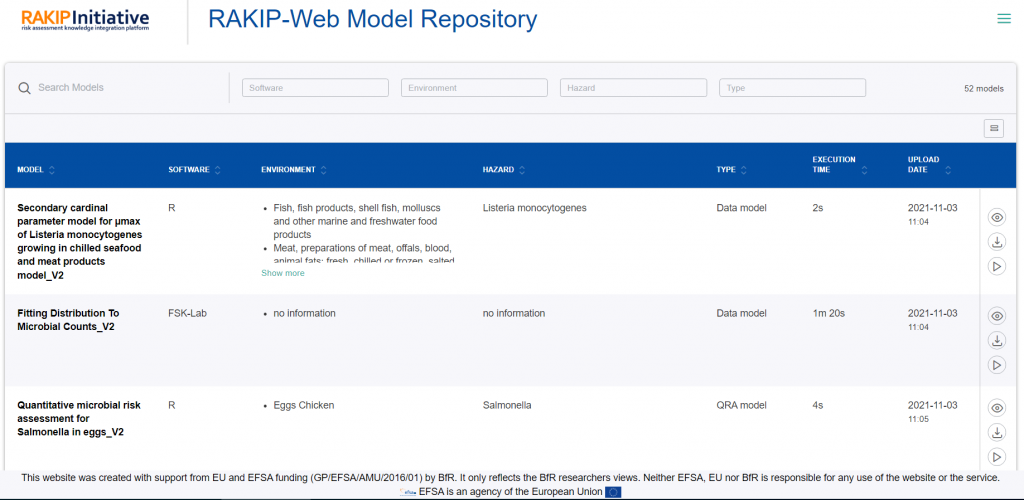The RAKIP-Web Model Repository can be accessed via this link

An overview of and access to RAKIP-Web Model Repository Web Services is available here
The RAKIP project has created two dedicated web-based resources for different user groups:
User group 1:
Members of the RAKIP Initiative
The RAKIP Model Repository contains:
- The RAKIP-Web Model Repository is a web-based data and model repository that can be accessed by members of the RAKIP_portal VRE from within the VRE. For RAKIP_portal VRE members it provides access to data and models uploaded by the RAKIP Initiative members in this repository.
- The RAKIP-Web Model Repository Web Services allow users to create, join and upload models to the RAKIP-Web Model Repository. These services are currently only accessible for RAKIP-Web Initiative members.
User group 2:
Any researchers interested in “Food Safety Knowledge exchange & modelling”
There is a growing number of online resources that allow researchers to benefit from RAKIP developments. In the following section we provide the corresponding links to those web-based tools that we are aware of:
1.: RAKIP-Web model repository: user can view and download models created by RAKIP members – currently still under development.
2.: RAKIP_portal Virtual Research Environment (VRE): users can upload, share, execute and download models or related content in this VRE. This portal was created within the AGINFRA+ -project and serves as a protected space in the cloud for researchers from the food modelling community. It is hosted by CNR via the “AGINFRA Gateway”. To access the RAKIP_portal VRE researchers must register in the AGINFRA Gateway and request access to the VRE. The RAKIP_portal VRE contains a so called “Data Catalogue” (https://aginfra.d4science.org/web/rakip_portal/catalogue) that can be publicly accessed also by non-VRE members. Any VRE user can decide if the information he shares via the “Data Catalogue” becomes accessible for the general public or only for members of the RAKIP_portal VRE.
3.: Bioinactivation: users can generate, export, import and execute R-based FSKX models in addition to the core functionality of the web portal (fitting equations through experimental data to create inactivation models)
4.: Food Modelling Journal (FMJ): researchers can import model metadata from an FSKX-compliant model directly into a paper draft. Further the “executable paper” feature allows an execution of FSKX models directly from inside the corresponding article.